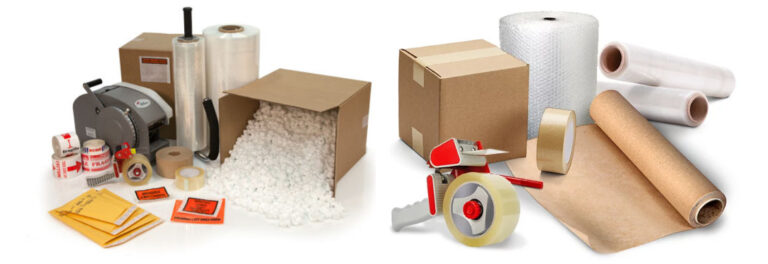Every delivery you send is a reflection of your business. It doesn’t matter if it’s a one-off parcel or a daily operation. The moment it leaves your hands, the quality of what arrives — and how it arrives — can either impress or disappoint.
Now more than ever, packaging isn’t just about wrapping things up. It’s about protection, perception, and performance. If you’re still using whatever’s on hand and hoping for the best, there’s a good chance it’s costing you more than you realise.
Damaged Goods Are Just the Beginning
When something gets damaged during delivery, it’s rarely a one-time problem. There are ripple effects that go far beyond the item itself.
● Customer frustration – A broken item isn’t just an inconvenience, it can sour the entire experience.
● Replacement costs – You’re often the one footing the bill for a replacement or refund.
● Time wasted – Handling complaints, organising returns, and reshipping eats into productivity.
● Brand damage – Word travels fast when service fails. Even one bad delivery can stick in someone’s memory for good.
All of this can be traced back to a single decision: what you used to package the item. If your materials are flimsy, poorly fitted, or just not suited to the job, the risk of damage shoots up.
It’s Not One-Size-Fits-All
There’s a temptation to grab whatever boxes or mailers are closest and call it a day. That shortcut might save a few minutes upfront, but it’s not worth it in the long run. The packaging supplies you need will vary depending on what’s being sent:
● Fragile items need proper padding, tight fit, and durable outer layers.
● Oddly shaped goods benefit from flexible wrap or custom-cut boxes.
● Perishable items often require insulated packaging and sometimes moisture control.
If you’re sending the same thing every time, you might be able to settle on a consistent packaging setup. But for most, a mix is needed. Sticking to just one type of box or filler can lead to overpacking, under-protecting, or both.
Weight and Size Matter More Than You Think
It’s not just about keeping things safe. The size and weight of your parcels can have a serious impact on your bottom line. Carriers calculate delivery fees based on dimensions as well as weight, so bulky or oversized packaging can cost more even if the item inside is light.
Using packaging that’s just the right size reduces this waste. It also improves how much stock you can store and how many packages you can fit in delivery vehicles. That can lower your shipping costs and speed up order fulfilment too.
The Unboxing Moment Is Part of the Experience
People notice more than you think when they receive a package. The way it looks and feels says a lot about how much you care. A box that’s too big and half full of crumpled paper feels careless. A mailer that’s barely sealed feels cheap.
On the flip side, when a parcel is compact, clean, and well secured, it tells the customer you value what you’re sending. It makes your business feel more trustworthy, more thoughtful, and more professional — all without saying a word.
Sustainability Isn’t Optional Anymore
There’s growing pressure from customers, regulators, and the market to reduce waste. Packaging plays a huge role in this. Too much filler, unnecessary plastic, or oversized boxes can turn people off fast.
You don’t have to sacrifice protection to stay eco-friendly. In fact, well-chosen sustainable packaging often performs better because it’s designed to reduce waste at every stage. It packs more efficiently, uses fewer materials, and can be easier to recycle.
Here’s what to look for:
● Minimal packaging – Right-sized boxes reduce the need for excess padding.
● Recyclable materials – Avoid mixed materials that are hard to process.
● Reusable options – Sturdy containers that can be repurposed have added value.
Not every customer will say something when they see excessive waste. But more than a few will notice, and over time, that perception can influence repeat business.
Small Errors Add Up
One or two packages with weak tape or the wrong box might seem like no big deal. But those small choices add up quickly when you’re sending multiple orders every week.
● A few millimetres of extra space can mean higher shipping fees.
● Weak seals might hold during packing but fail in transit.
● Using the wrong labels or adhesives can delay delivery or cause returns.
These aren’t isolated issues. They creep into your systems, slowly eroding efficiency, reputation, and revenue.
It’s Not Just About the Package — It’s About the Process
When you use the right supplies, everything works better. Packing is quicker. Staff waste less time trying to make things fit. There’s less damage, fewer complaints, and faster turnaround.
Here’s how the right packaging supplies can streamline operations:
● Better fit – Reduces packing time and material use.
● Stronger materials – Protect goods without the need for excessive padding.
● Clear labelling – Speeds up sorting and lowers the chance of misdelivery.
● Standardised sizes – Easier to stack, store, and ship.
Efficiency behind the scenes often translates into better service out front. And that’s something customers do notice.
Invest Now, Save Later
There’s a difference between cheap and cost-effective. Bargain packaging supplies might seem like a smart saving, but they often lead to higher overall costs. When you factor in replacements, complaints, and lost time, poor packaging becomes an expensive problem.
Spending a little more to get the right type and quality of supplies usually pays off. It keeps your products safe, your processes smooth, and your customers happy.
A Delivery Strategy You Can Rely On
Your delivery setup isn’t just a logistical step — it’s part of your customer experience, your reputation, and your growth. Packaging supplies might not be the flashiest part of your operation, but they have a massive impact on how your business is seen and how efficiently it runs.
